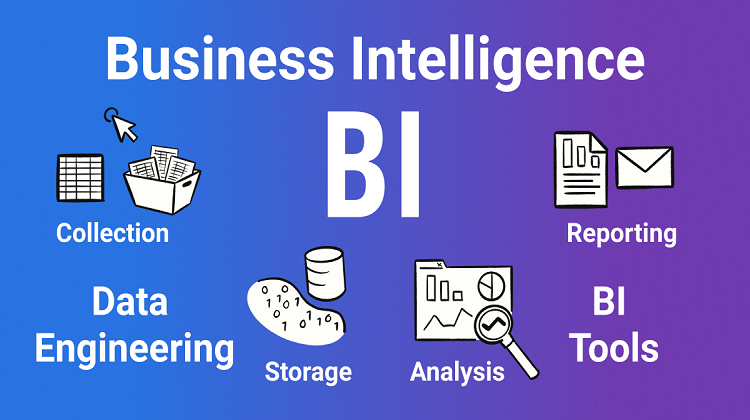
In this post, we will dive into the topic of BI reporting and see what it really means. We will cover the following topics in this post:
- What is BI reporting?
- Why do you need BI reporting?
- How do you go about creating BI reports?
- What types of BI reporting are there?
- What are the advantages and disadvantages of BI reporting?
Let’s get started!
What is BI reporting?
BI reporting can be used to analyze and report information that will help a business decide what needs to be done in order to achieve its goals. It will provide valuable insight into the status of a company and its performance.
In this type of reporting, information is collected from different sources such as customer feedback, employee surveys, product reviews, sales reports, etc. BI reporting is the process of analyzing data and making decisions based on the analysis. It is usually in the form of dashboards, scorecards, charts, etc.
You should use BI reporting if you want to get accurate results. If you are using an inefficient tool to generate reports, you will end up with inaccurate results. It is important that you get accurate results from your data.
You can use BI reporting tools to generate reports that are used to make decisions. These reports are usually generated using a BI platform. You can use BI reporting tools to make it easier to analyze data and make decisions. You can get the reports that you need from BI reporting tools in a variety of formats.
Why do you need BI reporting?
It is not always easy to come up with answers to questions like “Why do we need BI reporting?”.
Let’s try to find some reasons to answer this questions:
- To get the most out of your data.
- To understand what is going on within your organization. Within your organization.
- To get more value out of your business processes
- To take better-informed decisions
- To improve the performance of your organization
- To make a case for better resource allocation.
How do you go about creating BI reports?
How do you know when to start and when to stop? Do you rely on your instincts? You can’t really answer these questions with a simple yes or no, because it depends on the business context.
When it comes to BI reporting, we’re often looking for the sweet spot between too little and too much. In other words, what is a good balance between providing useful, actionable information and having to invest an excessive amount of time and effort in making that information meaningful.
What types of BI reporting are there?
There are many types of BI reporting. Here we will cover four types:
- Dashboards,
- Scorecards,
- Reports
- Charts
Dashboards
A dashboard is a visual display of data in an interactive format. A dashboard may be displayed on a web page, on a mobile app or even on a TV screen.
Data and charts Scores
A scorecard is a visual display of data that includes a list of measures (measures being a type of metric) along with their status (passed/failed). It also usually includes a list of indicators (a type of performance metric) along with their status (passed/failed).
It may include a visual representation of the measure in the form of a graph or chart. Reports Reports are a series of visual displays of data.
What are the advantages and disadvantages of BI reporting?
I’d say there are a few different advantages and disadvantages.
Advantages
You have a single source for all your information You can do things like drill down to see more detail on certain items. You can create reports that will update automatically without having to send out email alerts.
Disadvantages
If you don’t have the resources to keep it up-to-date, then it won’t be as useful. You will have to write more code than a traditional reporting system (if you don’t already have this).
Final Thoughts
BI reporting can be used to generate reports that are used to analyze data and make decisions. It can be in the form of dashboards, scorecards, charts, etc. We need to use a BI platform to generate reports that can be used to analyze data and make decisions. BI reporting can be in the form of dashboards, scorecards, charts, etc.
For more on BI reporting and information of how it done flawlessly, you can contact Al Rafay Consulting for a professional piece of advice.



